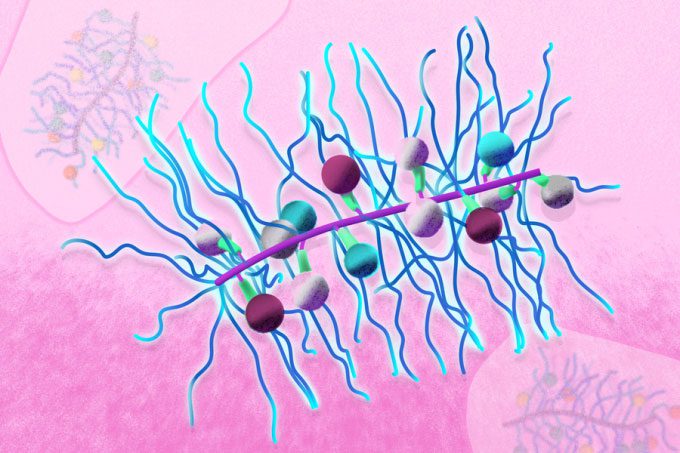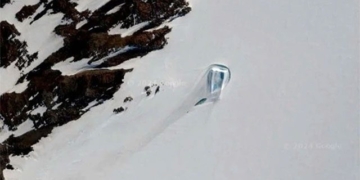By utilizing brush-shaped nanoparticles, Dr. Nguyễn Văn Thanh Hùng and his colleagues have successfully delivered various cancer drugs to the precise location of tumors.
The research, conducted by scientists from the Massachusetts Institute of Technology (MIT), including Dr. Nguyễn Văn Thanh Hùng, Dr. Jeremiah Johnson, Dr. Irene Ghobrial from Harvard Medical School, Dr. P. Peter Ghoroghchian, President of Ceptur Therapeutics, and Dr. Alexandre Detappe from the European Cancer Institute in Strasbourg, France, was published in Nature Nanotechnology at the end of January.
This is the first time chemists have designed a brush-shaped nanoparticle capable of carrying multiple types of drugs with precise and easily controllable ratios. With these particles, researchers can calculate and determine the optimal ratio of three cancer drugs for treating multiple myeloma.
In an interview from the U.S., Dr. Hùng Nguyễn, one of the lead authors of the study, stated that combining drugs for cancer treatment could be more effective than using a single drug, which is predominantly applied in current treatments. However, finding the optimal drug combination and ensuring it reaches the correct cancer cells is a challenge. The team succeeded in using nanoparticles to “transport” multiple cancer drugs simultaneously, allowing for precise accumulation at the tumor site and reducing side effects.
Since 2011, Dr. Jeremiah Johnson’s lab has been pursuing research on polymer nanoparticles for carrying various drugs. This time, the research group led by Dr. Hùng focused on a brush-shaped particle. To create these particles, drug molecules are inactivated by linking them with polymer building blocks (monomers), which are then mixed together in a specific ratio to polymerize. This results in chains extending from a central backbone, giving the molecule a brush-like structure with inactivated drug precursors. The separation of the linker releases the active ingredients.
To create a brush-like particle with two or three types of drugs (or any desired number of drugs), scientists synthesize drug-conjugated monomers, mix them, and polymerize them. The resulting product has the exact shape of a brush but contains the components of two, three, or more types of drugs needed for treatment.

BAM technology with brush-shaped particle design helps optimize cancer treatment drug combinations. (Image: Research Team).
The research team tested particles carrying only one drug: bortezomib for treating multiple myeloma. When bortezomib is used alone, the drug tends to accumulate in red blood cells and does not reach the target (the tumor).
When the researchers administered the brush-shaped precursor version in mice, they found that the particles accumulated mainly in the plasma because the brush structure protected the drug from immediate release, allowing it to circulate long enough to reach the target.
The use of brush-shaped particles enables researchers to analyze various drug combinations to evaluate which is most effective. This paves the way for further studies on combining cancer treatment drugs.
Dr. Johnson explained in a post on MIT’s website that if three types of drugs are injected into the body, the precise ratios of those drugs reaching the cancer cells simultaneously are quite low. The reason is that the drugs have different properties, causing them to go to different locations, significantly hindering the process of delivering the determined drug combinations.
If treated together with all three drugs in a particle capable of overcoming that obstacle, it facilitates the release of the combined ratios. Experimental results on mice with multiple myeloma showed that brush particles containing three drugs at a combined ratio significantly inhibited tumor growth compared to freely administered drugs at the same ratio and a mixture of three brush particles containing one different drug. Additionally, the brush particle solely containing bortezomib from the group was highly effective in slowing tumor growth.
Commenting on the study, Dr. Ken Anderson, a leading expert on multiple myeloma at Harvard Medical School and Dana-Farber Cancer Institute, stated that brush particle technology presents an opportunity to enhance treatment efficacy and response while avoiding side effects. “Many patients currently have no treatment options will have a new chance,” he shared.
Using nanoparticles to deliver drugs accurately is a research focus worldwide. Recently, mRNA technology, the foundation for developing the COVID-19 vaccine, also utilized nanoparticles for mRNA delivery. In cancer treatment, there has only been one nanoparticle that can deliver two specific drugs to the tumor (Vyxeos). Therefore, brush particles that can transport multiple drugs simultaneously without limitations may assist doctors in treating various cancers in the future.
Dr. Hùng further stated that he and his colleagues have established a company to bring laboratory results to patients. “We will produce brush particles on a large scale and bring nanoparticles into clinical trials. The team will continue to apply this technology to discover new cancer treatment methods,” he said.


















































